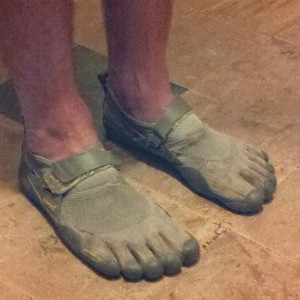
Many runners are ditching their sneakers and switching to thin-soled shoes that mimic the feeling of running barefoot. These extremely lightweight shoes were designed to give runners a proper stride and reduce injury, but without proper training they can do just the opposite.
Barefoot shoes soared in popularity after Christopher McDougall’s bestseller “Born to Run” was released in 2009. This book tells the story of an Indian tribe in Mexico whose members run extremely long distances — more than 400 miles — barefoot or with thin-lined sandals. Running enthusiasts wanted to join in on this phenomenon, but is everyone meant to run this way?
Doctors are reporting many injuries from these minimalist sport shoes. One study found injuries can be caused when runners do not adjust their foot-strike pattern or when runners begin running or walking long distances in these shoes without building up adequate muscles.
Many people run with a heel-foot strike, meaning they land on their heels and push off with the rest of their foot. Running barefoot is supposed to help a person adjust to a forefoot strike. Researchers say a forefoot strike is less injury prone because there is less of an impact on the legs and feet.
Problems stem from when a person does not adjust their stride while wearing basic sport shoes. A study by The American Council on Exercise, a nonprofit fitness research group, found that half of the runners who switched to barefoot running or minimalist sport shoes did not adjust their form to a forefoot strike, even after they were told to do so.
The study compared 16 healthy female runners between the ages of 19 and 25. Each week they ran three times for about 20 minutes. Their foot strike patterns were analyzed with three different running attires: barefoot, Vibram FiveFingers shoes and regular running sneakers.
When the women were wearing the regular running shoes, most of them had a heel strike and showed to have a high impact force. Only half of the women adjusted this strike to a forefoot pattern when wearing the Vibrams and running barefoot. Those who did adjust their strike experienced the lowest impact forces while running barefoot or with Vibrams, but women who did not adjust their strike experienced an impact almost twice as high as in regular running shoes.
Sales of minimalist sport shoes were up 41 percent in June, while regular running shoes were only up 15 percent. So far this year sales have totaled $31 million. So if you’re testing out these types of shoes, don’t just jump on the bandwagon. Make sure to adjust your stride and take a slow, steady approach.






